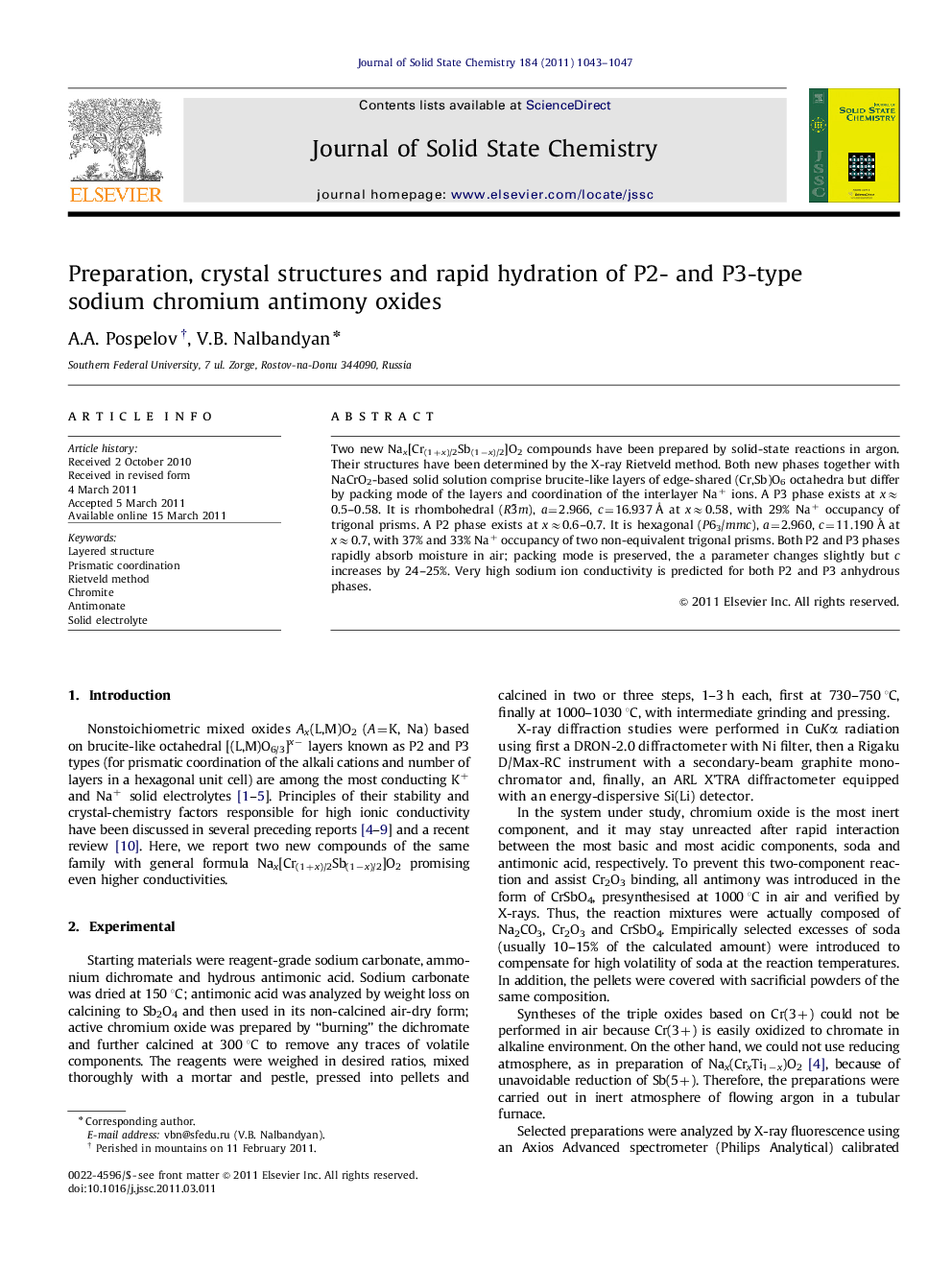| Article ID | Journal | Published Year | Pages | File Type |
|---|---|---|---|---|
| 1330813 | Journal of Solid State Chemistry | 2011 | 5 Pages |
Two new Nax[Cr(1+x)/2Sb(1−x)/2]O2 compounds have been prepared by solid-state reactions in argon. Their structures have been determined by the X-ray Rietveld method. Both new phases together with NaCrO2-based solid solution comprise brucite-like layers of edge-shared (Cr,Sb)O6 octahedra but differ by packing mode of the layers and coordination of the interlayer Na+ ions. A P3 phase exists at x≈0.5–0.58. It is rhombohedral (R3̄m), a=2.966, c=16.937 Å at x≈0.58, with 29% Na+ occupancy of trigonal prisms. A P2 phase exists at x≈0.6–0.7. It is hexagonal (P63/mmc), a=2.960, c=11.190 Å at x≈0.7, with 37% and 33% Na+ occupancy of two non-equivalent trigonal prisms. Both P2 and P3 phases rapidly absorb moisture in air; packing mode is preserved, the a parameter changes slightly but c increases by 24–25%. Very high sodium ion conductivity is predicted for both P2 and P3 anhydrous phases.
Graphical AbstractPolyhedral presentation of layered structures of Nax[Cr(1+x)/2Sb(1−x)/2]O2· (Cr,Sb)O6 octahedra are green. Part of the sodium prisms are open to show short distances between sodium sites which cannot be occupied simultaneously.Figure optionsDownload full-size imageDownload as PowerPoint slideHighlights► Two new layered Nax[Cr(1+x)/2Sb(1−x)/2]O2 phases, P2 and P3, have been prepared in argon. ► Interlayer O–O distances are larger than in Nax(M,Ti)O2 analogs (M=Cr,Ni,Li). ► As a result, both rapidly hydrate in air with c-axis expansion of 24–25%. ► Bottleneck radii are also larger, and this predicts very high Na+-ion conductivity.
